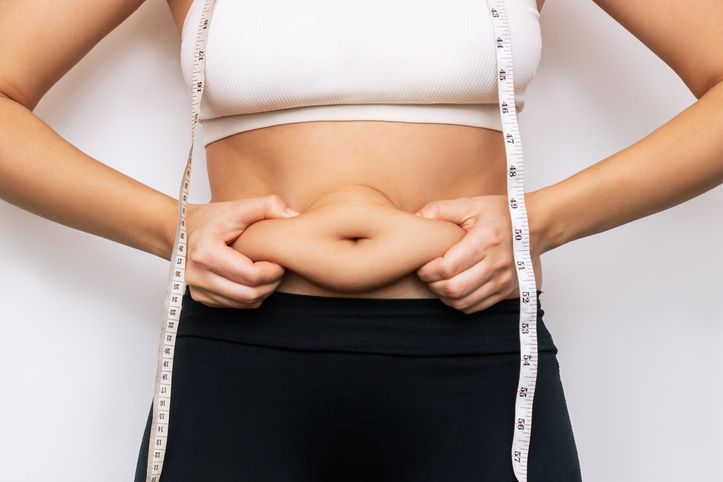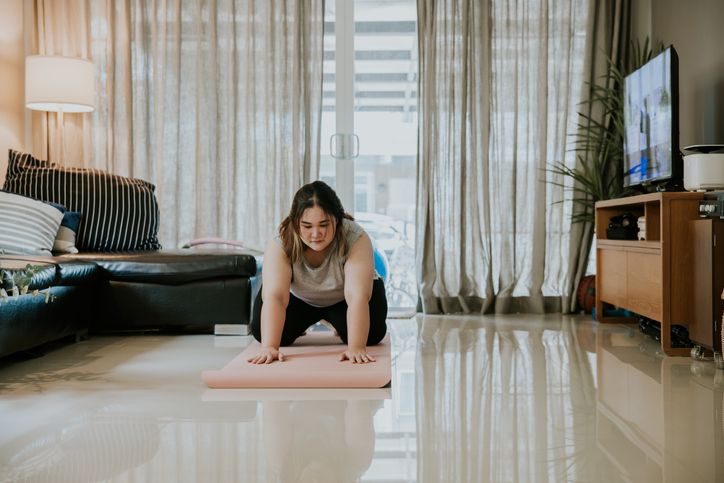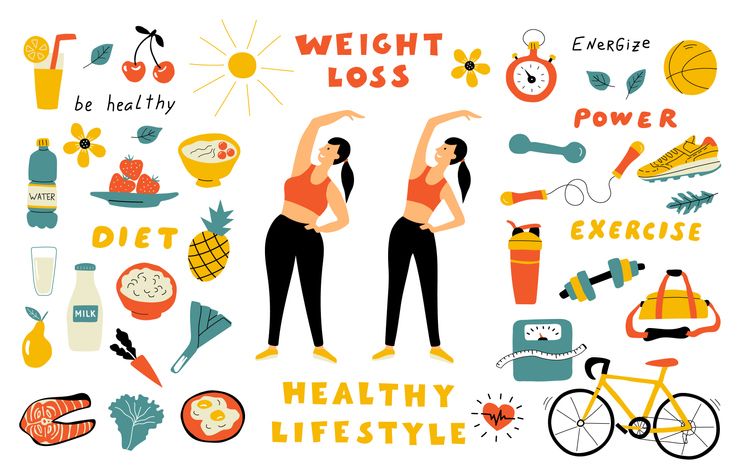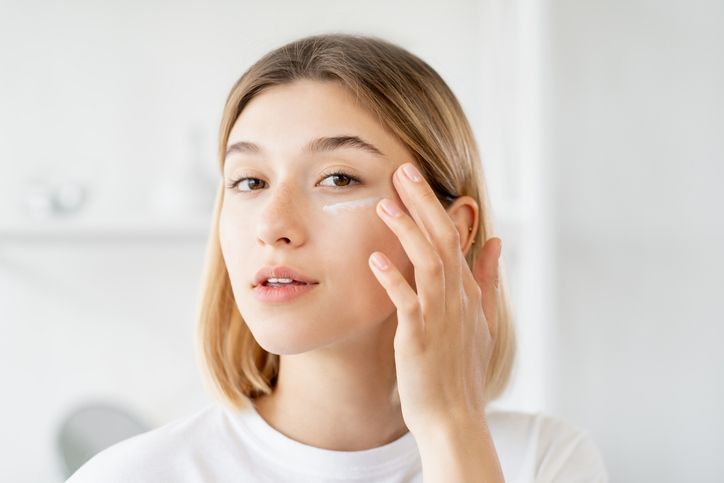- Home
- Trend
- Weight Loss Strategies
- Acne Tips
- Hair Health Information
- Blemish Removal Tips
- Acne Scar Removal Tips
- Muscle Building Techniques
- Intimate Care Tips
- Postpartum Intimate Care
- Eye Bags Wiki
- Tips for Face Slimming
- Secret of Permanent Hair Removal
- Breast Enlargement Tips
- Cure to Snoring
- Marionette Lines
- Skin-Tightening Secrets

免費體驗
S6 Body Sculpting Treatment
1 Minute Self-Registration
Date should not be before minimal date
Losing weight and achieving your ideal body weight is a goal for many people. It's not just about aesthetics; maintaining a healthy body weight is essential for overall well-being. We have been told that exercises are good for us and it also helps us to burn more calories, but many people do not know how they benefit our body and what exactly we should do. So today we will explore various weight loss exercises, including their frequency (times per week), their impact on muscle mass, and how they can help you shed those extra pounds and achieve your fitness goals.
1
I Want to Lose weight but Not with Exercises: The Psychology Behind the Push Backs

We feel you. People can feel reluctant to exercise for weight loss for several reasons. Here are some common factors that contribute to this reluctance:
1. Lack of motivation
Some individuals may struggle with finding the motivation to exercise regularly, especially if they don't enjoy physical activity or don't see immediate results.
2. Perceived difficulty
Exercise can be physically demanding, and some people may find it challenging, especially when starting a new routine. The perception of exercise as difficult can discourage people from getting started.
3. Time constraints
Modern life is often busy, and finding time for regular exercise can be a significant hurdle. Many people feel that they have limited time for workouts amidst work, family, and other commitments.
4. Fear of injury
The fear of getting injured during exercise can be a barrier for some. This fear may arise from past injuries or concerns about using gym equipment incorrectly.
5. Inconvenience
For some, going to a gym or exercising outdoors might be seen as inconvenient. This can include factors like not having access to a nearby gym or unfavourable weather conditions.
6. Lack of knowledge
Some individuals may not be aware of effective exercise routines for weight loss or may have misconceptions about what it entails. This lack of knowledge can make them hesitant to start.
7. Social anxiety
Introverts, rejoice! The idea of exercising in public, whether at a gym or in a group fitness class, can be intimidating and lead to reluctance.
8. Perfectionism
The desire to do exercise perfectly or achieve immediate, dramatic results can be demotivating. Weight loss and fitness often require consistent effort over time.
9. Body image concerns
People who feel self-conscious about their bodies may be reluctant to exercise in a public setting. They may fear judgment from others.
10. Lack of support
Having a support system can be crucial for maintaining an exercise routine. Without encouragement from friends or family, people may be less likely to stick with it.
To overcome these barriers, it can be helpful to set realistic goals, find an exercise routine that you enjoy, seek support from friends or a fitness buddy, and gradually build up your activity level. Additionally, consulting with a healthcare professional or fitness expert can provide guidance tailored to your specific needs and concerns.
2
The Importance of Exercise in Weight Loss

No matter we want it or not, exercise is a fundamental component of any successful weight loss plan, and it's probably the way for you to shed your very first KG. It aids in burning calories, boosting metabolism, preserving muscle mass, and improving overall health. Here's why exercise matters:
Burning calories
Physical activity expends energy, primarily from the calories you consume. To lose weight, you must create a calorie deficit by burning more calories than you consume. The number of calories burned during exercise varies depending on the activity and its intensity.
Boosting metabolism
Regular exercise increases your metabolic rate, leading to your body burning more calories, even at rest. For instance, a higher metabolic rate can lead to burning an additional 100-200 calories per day.
Preserving muscle mass
Certain exercises help preserve and build muscle mass, which is crucial because muscle tissue burns more calories at rest than fat tissue. A pound of muscle may burn around 6-10 calories per day at rest, whereas a pound of fat might only burn 2-3 calories per day.
Improving overall health
Exercise offers numerous health benefits, including reducing the risk of chronic diseases, enhancing heart health, and promoting mental well-being. These benefits extend beyond calorie burn and weight loss.
- Green Tea for Weight Loss: 4 Health Benefits + How to Drink It for Slimming Results!
- Liposuction Risks: 6 Common Liposuction Techniques & 4 Guidelines For Safe Weight Loss
- Have A Pear-Shaped Body? 2 Ways To Identify It + Diet, Fashion & Workout Hacks
- Six Ways to Do Intermittent Fasting: the Best Methods
3
The Impact of Exercise on Muscle Mass

No matter what our excuses are, we have to know that muscle mass is a significant factor in the weight loss process. So more muscle translates to a higher resting metabolic rate, and this is where exercises come in. Here's how exercise can influence your muscle mass:
Strength Training
Strength training exercises are vital for building and preserving muscle mass. These exercises create tiny tears in muscle fibres that repair and grow stronger over time. An hour of moderate-intensity strength training can burn approximately 180-266 calories.
Protein Consumption
Adequate protein intake is essential for muscle repair and growth. Lean protein sources like chicken, fish, lean beef, tofu, and legumes support muscle development.
Recovery and Rest
Proper muscle recovery is crucial for growth. Ensure you get enough sleep and allow muscles to recover between strength training sessions. This rest is vital for muscle repair and growth.
Hormones
Exercise, especially resistance training, positively impacts hormones like testosterone and growth hormone, aiding muscle growth. These hormonal changes can support the development of lean muscle tissue.
4
Best Exercises for Weight Loss and Recommended Exercise Frequency to Burn Body Fat

Regular exercise plays a pivotal role in achieving your goals to burn calories and some may even help you to build core muscles. It is essential to understand the significance of the frequency and type of workouts you engage in to create a successful weight loss strategy. The American Heart Association has provided guidelines to help individuals structure their exercise routines effectively. Let's delve deeper into various forms of exercise and their calorie-burning potential.
Aerobic Exercise
Aerobic exercises, such as brisk walking, running, or high-intensity interval training (HIIT), are a cornerstone of any weight loss program. The American Heart Association recommends a minimum of 150 minutes of moderate-intensity aerobic exercise or 75 minutes of vigorous-intensity exercise per week for adults. This translates to about 30 minutes of exercise per day for five days a week. These exercises not only enhance cardiovascular health but also contribute to calorie expenditure. A 30-minute session of brisk walking can burn between 314-469 calories, while more intense activities like running or HIIT can torch an impressive 600-900 calories per hour.
Strength Training
Incorporating strength training into your routine is crucial for building lean muscle mass. It's recommended to engage in strength training at least two to three times per week, focusing on major muscle groups. Strength training may not burn as many calories during the workout as aerobic exercises, but it is vital for long-term weight management. A typical strength training session can help you burn approximately 180-266 calories per hour.
Running
Running is a high-impact, calorie-burning exercise that is highly efficient for weight loss. Aim for 30-60 minutes of running sessions, 3-5 times a week. The number of calories you burn while running depends on your pace, with an estimated range of 600-900 calories per hour. Running not only aids in weight loss but also provides numerous cardiovascular benefits.
Swimming
Swimming is an excellent full-body, low-impact exercise option. Targeting 150 minutes of moderate-intensity swimming per week can help you burn around 420-600 calories per hour. This makes swimming an attractive choice for those who want to shed excess weight while minimizing impact on joints.
Cycling
Cycling is another effective exercise for weight loss, primarily targeting lower body strength. Similar to swimming, 150 minutes of cycling per week can help you burn around 420-600 calories per hour, depending on your intensity. It's an enjoyable and sustainable way to stay active and lose weight.
High-Intensity Interval Training (HIIT)
HIIT is a time-efficient and effective way to burn calories and improve cardiovascular fitness. A 20-30 minute HIIT session can burn approximately 400-600 calories per hour. HIIT like weight training is known for its ability to elevate your metabolism, allowing you to continue burning calories even after the workout ends.
Walking
Brisk walking is a simple yet effective exercise that anyone can incorporate into their daily routine. Aim for 30-60 minutes of brisk walking, five times a week. This can help you burn approximately 314-469 calories per hour. Walking is particularly beneficial for those looking for a low-impact exercise option.
Yoga
While yoga may not burn as many calories during a session compared to other forms of exercise, it contributes to overall health and well-being. Practicing yoga 2-3 times a week can burn around 180-266 calories per hour. Its benefits extend beyond calorie burning and encompass flexibility, stress reduction, and improved mental health.
Dance
Dancing is a fun and engaging way to lose weight. Engaging in 30-60 minutes of dancing, 3-5 times a week, can burn approximately 314-469 calories per hour or even more, depending on the intensity and style of dance. Dancing not only helps you burn calories but also improves coordination, balance, and overall fitness.
In conclusion, understanding the type of exercise that suits your preferences and needs, and maintaining a consistent workout routine, is crucial for achieving weight loss goals. Each form of exercise offers unique benefits, and by adhering to the recommended guidelines, you can progress toward a healthier, fitter, and more confident version of yourself.

免費體驗
S6 Body Sculpting Treatment
1 Minute Self-Registration
Date should not be before minimal date
5
Monitoring Your Progress in 5 Ways

To ensure you stay motivated and make necessary adjustments to your physical fitness plan, tracking your progress is vital. While one effective option is enlisting the help of a certified personal trainer to oversee your weight loss journey, there are numerous other approaches to consider. Here are five practical and effective methods for actively monitoring your weight loss journey:
1. Explore Perfect Medical's S6 Body Sculpting Treatment
Our S6 Body Sculpting Treatment employs a low-energy bio-laser to target subcutaneous fat layers in specific areas without resorting to invasive surgery. This innovative approach works by heating and eliminating fat cells, releasing fatty acids that support the lymphatic system's natural drainage process. Simultaneously, vacuum suction technology massages the treated area, promoting an accelerated metabolic rate. Additionally, the bio-laser technology stimulates collagen production, a protein that enhances skin firmness. This comprehensive procedure is suitable for a range of body areas, including the abdomen, waist, arms, buttocks, thighs, calves, and back, so you will be able to achieve nice body contour in a shorter amount of time!
2. Maintain a workout journal
Aside from matching it with the right treatment, you can also keep a detailed record of your exercise routines, meticulously noting the type of exercises, their duration, and the intensity with which you perform them. This practice allows you to keep a comprehensive record of your physical activity, making it easier to track your progress.
3. Take measurements
In addition to tracking your weight on a scale, it's important to measure the circumference of key areas such as your waist, hips, and other relevant body parts. By doing so, you can gain insights into changes in your body composition that may not be apparent through weight measurements alone.
4. Leverage fitness apps
Make use of fitness applications designed to help you track your workouts, monitor your daily calorie intake, and set achievable fitness goals. These apps provide a convenient and accessible way to stay organised and remain on track with your fitness objectives.
5. Capture progress photos
Regularly take photographs of your body to visually document and assess the changes in your physique over time. These images serve as a powerful and tangible record of your transformation, offering motivation and encouragement as you witness your progress.
By integrating these monitoring techniques into your weight loss journey and considering the estimated calorie burn associated with various exercises, you can make informed decisions that align with your specific weight loss goals. This comprehensive approach not only keeps you motivated but also enables you to fine-tune your plan for optimal results.
6
Last Few Words

Losing weight and maintaining a healthy body weight is attainable through a combination of regular exercise and a balanced diet. The exercises mentioned in this article, when done with the recommended frequency, can help you shed pounds, improve your overall health, and increase your muscle mass. Remember that consistency and patience are key when it comes to successful weight loss.
By making exercise a regular part of your lifestyle, you can achieve and maintain your ideal body weight while reaping the numerous health benefits that come with an active life. So lace up your running shoes, dive into the pool, or hit the gym, and embark on your weight loss journey today!

免費體驗
S6 Body Sculpting Treatment
1 Minute Self-Registration
Date should not be before minimal date
FAQ

1. Is it possible to lose weight through exercise alone?
While exercise is a crucial component of weight loss, diet also plays a significant role. To achieve the best results, it's essential to combine regular exercise with a healthy, balanced diet.
2. How quickly will I see results from my exercise routine?
The rate at which you see results can vary from person to person. Factors like your starting weight, genetics, and consistency in your exercise and diet play a role. It's important to focus on long-term, sustainable progress rather than quick fixes.
3. Can I target specific areas for weight loss through exercise?
You can't spot-reduce fat from specific areas. Weight loss occurs uniformly across the body. However, strength training can help reshape and tone specific muscle groups.
4. Is it possible to build muscle and lose weight simultaneously?
Yes, it is possible to build muscle while losing weight. This is known as body recomposition. By combining strength training with a balanced diet, you can shed fat and gain lean muscle.
5. What should I do if I hit a weight loss plateau?
Plateaus are common during weight loss journeys. To break through, try changing your exercise routine, adjusting your diet, or seeking guidance from a fitness professional or nutritionist.








